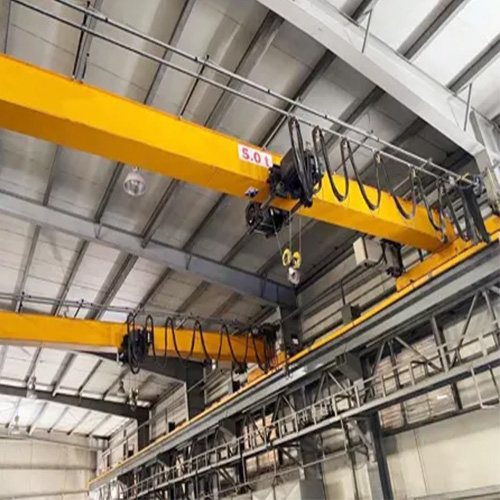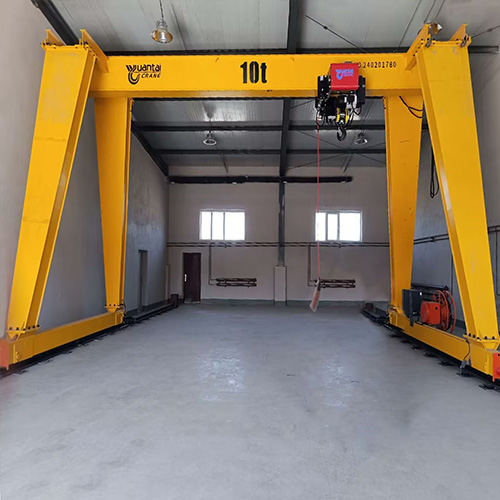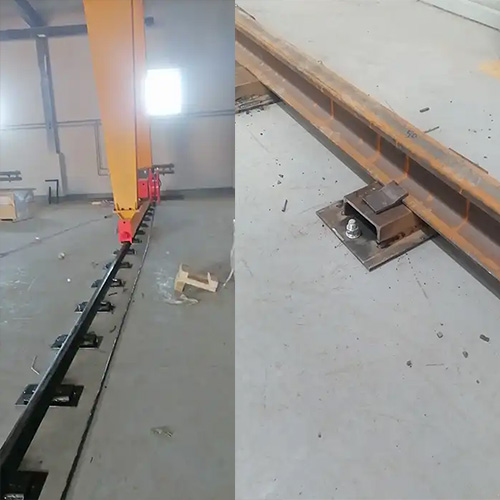1 & 2 Girder Overhead Cranes in Cashmere Processing Plant Mongolia
3 ton to 50 ton overhead crane for sale Mongolia. Custom single girder & double girder overhead cranes for cashmere processing plant in Mongolia. Check now.
Category: Mongolia
Your Trusted Overhead Cranes Manufacturer & Supplier
1 & 2 Girder Overhead Cranes in Cashmere Processing Plant Mongolia
3 ton to 50 ton overhead crane for sale Mongolia. Custom single girder & double girder overhead cranes for cashmere processing plant in Mongolia. Check now.
Enhancing Efficiency: Overhead Cranes in Cashmere Processing Plants in Mongolia
Cashmere processing plants in Mongolia stand as vital hubs in the global cashmere industry, renowned for their exquisite craftsmanship and quality products. These facilities play a pivotal role in transforming raw cashmere fiber into luxurious garments and textiles cherished worldwide. However, behind the allure of cashmere lies a complex production process that relies heavily on efficient material handling.
Efficiency is vital in cashmere processing plants, where every step of the production process demands precision and speed. From receiving raw cashmere bales to weaving delicate threads into finished garments, the seamless flow of materials is essential for meeting demanding production schedules and maintaining product quality. Any inefficiency in material handling can lead to costly delays, production bottlenecks, and compromised product integrity.
Enter overhead cranes – the unsung heroes of cashmere processing plants. These robust yet nimble machines are instrumental in streamlining material handling operations, ensuring the smooth flow of goods throughout the production facility. From lifting and transporting heavy cashmere bales to delicately maneuvering spinning machinery, overhead cranes play a multifaceted role in enhancing productivity and efficiency.
Overview of Cashmere Processing Plants in Mongolia

The Cashmere Industry in Mongolia
Mongolia boasts a rich heritage in the production of cashmere, renowned globally for its unparalleled quality and softness. The country's vast grasslands provide an ideal environment for raising cashmere goats, whose fine undercoat is harvested annually through traditional herding practices. With its abundance of raw material and skilled artisans, Mongolia stands as a leading player in the global cashmere market, exporting premiumquality fibers to fashion capitals around the world.
The Cashmere Processing Stages
Cashmere processing involves several intricate stages, each essential for transforming raw fibers into luxurious garments and textiles:
- Sorting and Cleaning: Raw cashmere fibers are sorted by hand to remove impurities and separate the finest fibers from coarser ones. This meticulous process ensures the purity and quality of the final product.
- Dehairing: The sorted fibers undergo dehairing, where mechanical or chemical methods are used to remove the coarse guard hairs from the soft undercoat. This step is crucial for achieving the signature softness and smooth texture of cashmere.
- Spinning: Dehaired cashmere fibers are spun into yarn using spinning machinery, creating threads of varying thickness and texture. The spinning process requires precision and consistency to produce highquality yarn suitable for weaving or knitting.
- Weaving and Knitting: Cashmere yarns are woven or knitted into fabric panels, which are then cut and sewn into finished garments, accessories, or textiles. Skilled artisans meticulously craft each piece to uphold the reputation of Mongolian cashmere for excellence and luxury.
Functions of Overhead Cranes in Cashmere Processing Plant
Overhead cranes are integral to various processing procedures within cashmere processing plants, facilitating the efficient movement of materials and equipment throughout the production process. Here's how overhead cranes are used in different stages of cashmere processing:
- Receiving and Sorting: Overhead cranes are utilized to unload raw cashmere bales from delivery trucks and transport them to the sorting area. They assist in positioning the bales for manual sorting, ensuring a smooth flow of materials and minimizing handling time.
- Cleaning and Dehairing: Overhead cranes transport sorted cashmere bales to cleaning and dehairing machines for processing. They assist in loading and unloading the bales into the machines, ensuring a continuous workflow and minimizing manual labor.
- Spinning and Weaving: Overhead cranes transport spinning machinery, yarn spools, and fabric rolls between different workstations in the spinning and weaving departments. They assist in positioning spinning frames and weaving looms, optimizing production efficiency and minimizing downtime.
- Finishing and Packaging: Overhead cranes assist in transporting finished cashmere garments and textiles to the finishing area for inspection and packaging. They help in loading packaged products onto pallets or crates for storage or shipment, ensuring proper handling and minimizing damage.
- Maintenance and Repair: Overhead cranes are used to lift and transport heavy equipment and machinery for maintenance and repair. They assist in replacing wornout parts, conducting inspections, and performing routine maintenance tasks, ensuring the smooth operation of the production line.
Overall, overhead cranes play a critical role in every stage of cashmere processing, from receiving raw materials to packaging finished products. Their versatility, precision, and reliability make them indispensable tools for optimizing material handling operations and enhancing productivity within cashmere processing plants.Efficient material handling is vital in cashmere processing plants to ensure the seamless flow of materials throughout the production process. Any disruptions or delays in material handling can impact production schedules, compromise product quality, and increase operational costs. By optimizing material handling operations, cashmere processing plants can maximize productivity, minimize waste, and uphold the high standards expected in the cashmere industry.
Typical Loads Handled in Cashmere Processing Plants
Cashmere processing plants handle a variety of loads throughout the production process, each requiring careful handling and transportation:
- Cashmere Bales: Raw cashmere fibers are harvested from cashmere goats and processed into compact bales for transport to processing facilities. These bales are bulky and can weigh several kilograms to tens of kilograms, depending on the quantity and quality of the fibers.
- Spinning Machinery: Industrial spinning machinery is used to spin dehaired cashmere fibers into yarn. These machines vary in size and complexity, ranging from compact spinning frames to large spinning machines with multiple spindles and winding units.
- Finished Garments: Once processed and woven or knitted into fabric panels, cashmere garments and textiles are packaged and prepared for distribution. Finished garments may include sweaters, scarves, shawls, blankets, and other luxurious items prized for their softness and warmth.
Loads Handled by Overhead Cranes
Cashmere Bales: These bales contain raw cashmere fibers harvested during the shearing season. They are tightly compressed and bound for easy handling and transportation to processing plants.
Spinning Machinery: Industrial spinning frames, spinning machines, and winding units are examples of spinning machinery commonly used in cashmere processing plants. These machines vary in size and configuration based on the specific spinning process requirements.
Finished Garments: Finished cashmere garments, such as sweaters, scarves, and blankets, are delicate and require careful handling to prevent damage to the fabric and maintain their quality and appearance.
Importance of Proper Handling and Transportation
Proper handling and transportation of delicate materials like cashmere are essential to preserve their quality and integrity throughout the production process. Improper handling can lead to damage, contamination, or loss of valuable fibers, resulting in production delays, increased costs, and compromised product quality. By ensuring the careful handling and transportation of cashmere bales, spinning machinery, and finished garments, cashmere processing plants can uphold the high standards expected in the industry and deliver premiumquality products to discerning customers worldwide.
Crane Applications in Cashmere Processing Plants

Lifting and Transporting Cashmere Bales
In cashmere processing plants, overhead cranes play a crucial role in the efficient handling of cashmere bales from the receiving area to various processing stations. These cranes are equipped with specialized lifting attachments, such as hooks or slings, designed to securely grip and lift bulky bales without causing damage to the delicate fibers. With their robust construction and precise controls, overhead cranes can safely transport cashmere bales across the production floor, facilitating smooth material flow and minimizing manual handling efforts.
Assistance in Spinning and Weaving Processes
Overhead cranes provide invaluable assistance in the spinning and weaving processes within cashmere processing plants. They are used to transport spinning machinery, yarn spools, and fabric rolls between different workstations, ensuring seamless integration of equipment and materials throughout the production line. By efficiently moving spinning frames, spinning machines, and other equipment, overhead cranes help optimize workflow and maximize productivity in cashmere spinning and weaving operations.
Importance of Precise and Controlled Movements
In delicate cashmere processing operations, precision and control are paramount to prevent damage to the fragile fibers and ensure the quality of the final product. Overhead cranes offer precise and controlled movements, allowing operators to position loads with accuracy and finesse. Whether lifting cashmere bales, maneuvering spinning machinery, or transporting finished garments, overhead cranes enable operators to perform tasks with confidence, minimizing the risk of accidents or mishaps that could compromise product integrity.
By providing precise and controlled movements, overhead cranes contribute to the overall efficiency, safety, and quality of cashmere processing operations. Their ability to handle delicate materials with care and precision makes them indispensable assets in the dynamic world of cashmere manufacturing. In the following section, we will explore the specific types of overhead cranes commonly used in cashmere processing plants and their unique features tailored to the industry's needs. Stay tuned to learn more about these specialized lifting solutions.
Crane Types Used in Cashmere Processing Plants
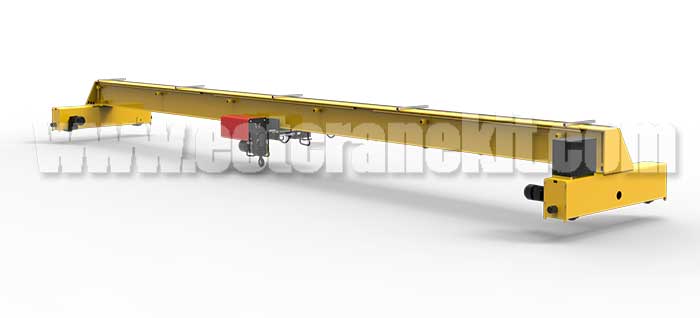
Single girder overhead cranes are commonly used in cashmere processing plants for their versatility and efficiency. These cranes feature a single horizontal beam (girder) supported by end trucks, allowing them to span the width of the production facility. Single girder cranes are ideal for light to moderate lifting tasks and are wellsuited for handling cashmere bales, spinning machinery, and finished garments. Their compact design and precise controls make them suitable for navigating tight spaces and performing delicate material handling operations with ease.
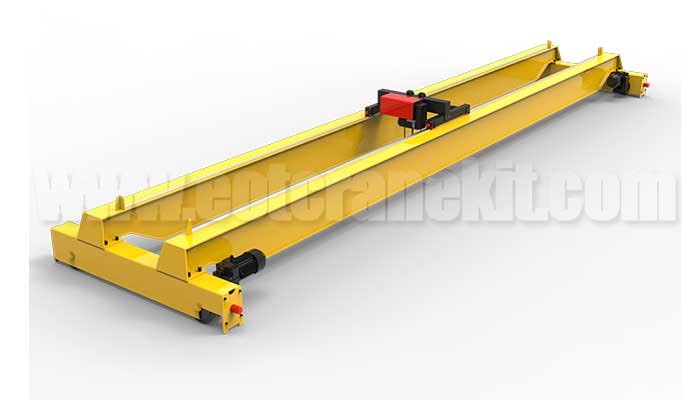
Double girder overhead cranes are preferred for heavier lifting applications and larger production facilities. These cranes feature two horizontal beams (girders) supported by end trucks, providing increased stability and lifting capacity compared to single girder cranes. Double girder cranes are capable of lifting heavier loads such as bulk cashmere bales, large spinning machinery, and oversized fabric rolls. Their robust construction and high lifting capabilities make them suitable for demanding cashmere processing operations where precision and reliability are paramount.
Comparison of Crane Types in Cashmere Processing Applications

Single Girder Overhead Bridge Cranes:
Advantages: Versatile, costeffective, suitable for light to moderate lifting tasks, compact design for navigating tight spaces.
Applications: Handling cashmere bales, transporting spinning machinery, moving finished garments.
Ideal for small to mediumsized cashmere processing plants with limited space and lighter lifting requirements.

Double Girder Overhead Bridge Cranes:
Advantages: Increased stability, higher lifting capacity, suitable for heavy lifting tasks, robust construction for demanding applications.
Applications: Lifting bulk cashmere bales, transporting large spinning machinery, handling oversized fabric rolls.
Ideal for largescale cashmere processing plants with heavier lifting requirements and larger production facilities.
In cashmere processing plants, the choice between single girder and double girder overhead cranes depends on factors such as space availability, lifting requirements, and budget considerations. Both crane types offer distinct advantages and can be customized to meet the specific needs of cashmere processing operations. In the next section, we will explore the tangible benefits of overhead cranes in enhancing productivity and efficiency within cashmere processing plants. Stay tuned to discover how these specialized lifting solutions contribute to the success of the cashmere industry in Mongolia.
Typical Tonnages Used in Cashmere Processing Plants
In cashmere processing plants, the selection of crane tonnage is crucial to ensure optimal lifting capacity for handling various loads. Tonnage refers to the maximum weight that a crane can lift safely, and it is determined based on the heaviest loads encountered in the production process. Typical tonnages used in cashmere processing plants vary depending on the size of the facility, the nature of the operations, and the types of loads being handled.
Range of Tonnages: 5 tons to 20 tons
Cashmere processing plants commonly utilize overhead cranes with tonnages ranging from 5 tons to 20 tons. This range covers the majority of lifting requirements encountered in cashmere processing operations, including the handling of cashmere bales, spinning machinery, and finished garments. Smaller cranes with lower tonnages are suitable for lighter lifting tasks such as transporting fabric rolls and components, while larger cranes with higher tonnages are employed for lifting bulk cashmere bales and heavy machinery.
Factors Influencing Tonnage Selection
Several factors influence the selection of crane tonnage in cashmere processing plants:
- Load Weight: The weight of the heaviest loads encountered in the production process determines the minimum tonnage required for the crane. It is essential to select a crane with sufficient lifting capacity to handle all anticipated loads safely.
- Safety Margin: A safety margin is typically added to the calculated tonnage to account for unexpected variations in load weight or operational conditions. This ensures that the crane can handle occasional heavier loads without exceeding its rated capacity.
- Future Expansion: Cashmere processing plants may consider future expansion plans when selecting crane tonnage. Choosing a crane with a slightly higher tonnage than the current requirements allows for future growth and increased production capacity without the need for crane replacement or upgrades.
- Operating Environment: The operating environment, including factors such as floor space, ceiling height, and layout of the production facility, may influence the choice of crane tonnage. It is essential to select a crane size that can maneuver comfortably within the available space while providing the necessary lifting capacity.
By carefully considering these factors, cashmere processing plants can select the appropriate crane tonnage to meet their specific lifting requirements and ensure safe and efficient material handling operations. In the next section, we will explore the benefits of overhead cranes in improving productivity and safety within cashmere processing plants. Stay tuned to learn more about how these essential lifting solutions contribute to the success of the cashmere industry in Mongolia.
Benefits of Overhead Cranes in Cashmere Processing
Increased Efficiency and Productivity in Material Handling
Overhead cranes play a pivotal role in enhancing efficiency and productivity within cashmere processing plants. By providing a reliable and efficient means of material handling, overhead cranes streamline workflow processes, minimize downtime, and optimize resource utilization. These cranes can swiftly transport cashmere bales, spinning machinery, and finished garments between production stations, reducing manual handling efforts and accelerating production cycles. With their precise controls and ability to navigate tight spaces, overhead cranes enable cashmere processing plants to meet demanding production schedules and deliver highquality products to market faster.
Enhanced Safety for Workers and Delicate Materials
Safety is paramount in cashmere processing plants, where delicate materials and intricate machinery are handled daily. Overhead cranes contribute to a safer working environment by reducing the risk of accidents and injuries associated with manual lifting and transporting heavy loads. With overhead cranes, workers can operate equipment from a safe distance, minimizing exposure to hazardous conditions and ergonomic strains. Additionally, overhead cranes are equipped with safety features such as overload protection, emergency stop buttons, and collision avoidance systems, further enhancing worker safety and protecting delicate materials from damage during handling and transportation.
Cost-Effectiveness and Return on Investment for Cashmere Processing Plants
Investing in overhead cranes offers significant costeffectiveness and a high return on investment for cashmere processing plants. By streamlining material handling operations, overhead cranes reduce labor costs associated with manual handling and increase operational efficiency. These cranes also minimize the risk of product damage and material wastage, resulting in lower production costs and improved product quality. Furthermore, overhead cranes are durable and reliable, requiring minimal maintenance and offering longterm operational benefits. The initial investment in overhead cranes is quickly recouped through increased productivity, reduced downtime, and improved product consistency, making them a valuable asset for cashmere processing plants seeking to enhance their competitive edge in the global market.
In conclusion, overhead cranes play a vital role in optimizing material handling processes, enhancing worker safety, and driving costeffective operations within cashmere processing plants. Their versatility, efficiency, and reliability make them indispensable assets for cashmere processing plants striving to meet the demands of a dynamic and competitive industry. By leveraging the benefits of overhead cranes, cashmere processing plants can achieve higher levels of efficiency, productivity, and profitability, ensuring their continued success in the everevolving cashmere market.
Case Studies and Success Stories
Examples of Cashmere Processing Plants in Mongolia Using Overhead Cranes
G**i Cashmere Co., Ltd.: G**i Cashmere Co., Ltd., one of Mongolia's leading cashmere producers, has implemented overhead cranes in its production facilities to optimize material handling processes. These cranes are utilized for lifting and transporting cashmere bales, spinning machinery, and finished garments throughout the production line, contributing to increased efficiency and productivity.
A**i Cashmere Co., Ltd.: A**i Cashmere Co., Ltd., a prominent cashmere processing plant in Mongolia, relies on overhead cranes for safe and efficient material handling operations. These cranes are instrumental in moving delicate materials and heavy equipment with precision and control, ensuring the seamless flow of production and maintaining product quality.
Testimonials from Plant Managers and Operators on the Benefits of Crane Integration
Batbold, Plant Manager at G**i Cashmere Co., Ltd.: "Integrating overhead cranes into our production process has been a gamechanger for us. Not only have we seen a significant improvement in efficiency and productivity, but the safety of our workers has also been greatly enhanced. Overhead cranes have become indispensable tools in our daily operations."
Enkhbayar, Crane Operator at A**i Cashmere Co., Ltd.: "As a crane operator, I can attest to the value that overhead cranes bring to our workplace. Their precision and reliability make my job easier and safer, allowing me to handle delicate materials with confidence. With overhead cranes, we've been able to achieve higher levels of productivity and efficiency."
Demonstrated Improvements in Productivity, Efficiency, and Safety
Implementing overhead cranes has led to a noticeable increase in productivity and efficiency within cashmere processing plants in Mongolia. By streamlining material handling processes, overhead cranes have reduced downtime, minimized manual labor, and accelerated production cycles.
Furthermore, overhead cranes have enhanced safety in the workplace by reducing the risk of accidents and injuries associated with manual lifting. With features such as overload protection and emergency stop buttons, overhead cranes provide a safe and controlled environment for workers to operate in.
Overall, the integration of overhead cranes has resulted in demonstrated improvements in productivity, efficiency, and safety within cashmere processing plants in Mongolia. These success stories highlight the tangible benefits that overhead cranes bring to the cashmere industry, ensuring its continued growth and success in the global market.
Conclusion: Custom Bridge Cranes for Your Plants
In conclusion, overhead cranes play a pivotal role in the success of cashmere processing plants in Mongolia. These specialized lifting solutions streamline material handling processes, enhance productivity, and ensure the safe and efficient production of highquality cashmere products. From lifting and transporting cashmere bales to assisting in spinning and weaving processes, overhead cranes are indispensable assets that contribute to the overall efficiency and competitiveness of cashmere processing operations.
Emphasis on the Role of Efficient Material Handling in Maintaining Competitiveness
Efficient material handling is essential for cashmere processing plants to maintain competitiveness in the global market. With increasing demand for premiumquality cashmere products, optimizing production processes becomes imperative. Overhead cranes enable cashmere processing plants to meet the demands of a fastpaced industry by minimizing downtime, reducing labor costs, and ensuring consistent product quality. By investing in advanced material handling solutions like overhead cranes, cashmere processing plants can stay ahead of the competition and meet the evolving needs of customers worldwide.
In conclusion, overhead cranes are indispensable assets in the cashmere processing industry, offering tangible benefits in terms of efficiency, productivity, and safety. By recognizing the importance of efficient material handling and embracing advanced crane technologies, cashmere processing plants in Mongolia can thrive in an increasingly competitive market landscape, delivering premiumquality products to customers around the world.
Related Products
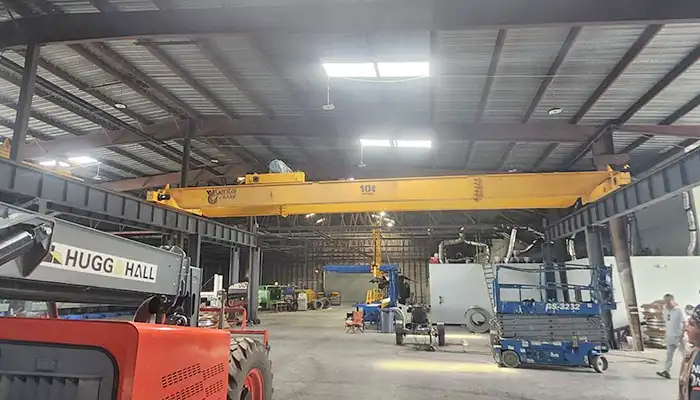
Affordable 10 ton double girder overhead crane with CD/MD hoist trolley, built for U.S. standards, ideal for construction and industrial lifting
Free consultation to Confirm Parameters & Specifications and Get
Latest Crane Price & Crane Rate.
- Types of overhead cranes : _______?
- Optional: Overhead travelling crane, goliath gantry crane,Slewing jib crane, Single girder or double girder crane,small portable crane or kbk crane, etc.
- Capacity of overhead crane: _______?
- Optional: 0.25ton, 0.5 ton, 1 ton, 2 ton, 3ton, 5 ton, 10 ton,15ton, 20ton, 25 ton, 30ton,35ton, up to 550ton, etc.
- Crane span & lifting height : _______?
- Crane travelling length : _____?
- Control of overhead crane:_______?
- Optional: pendant/ remote/cabin control
- Voltage supply of overhead crane:_____?
- Eg,: 380V50/60HZ,3Phase or others,etc.
- Application/usage of crane:_______?
- Eg,: Steel mill, ,injection mold, cement,stone, concrete,granite, general manufacturing, etc.
Just leave a message via the contact form and our hoist and crane engineer will contact you with in 24working hours.
Get In Touch
